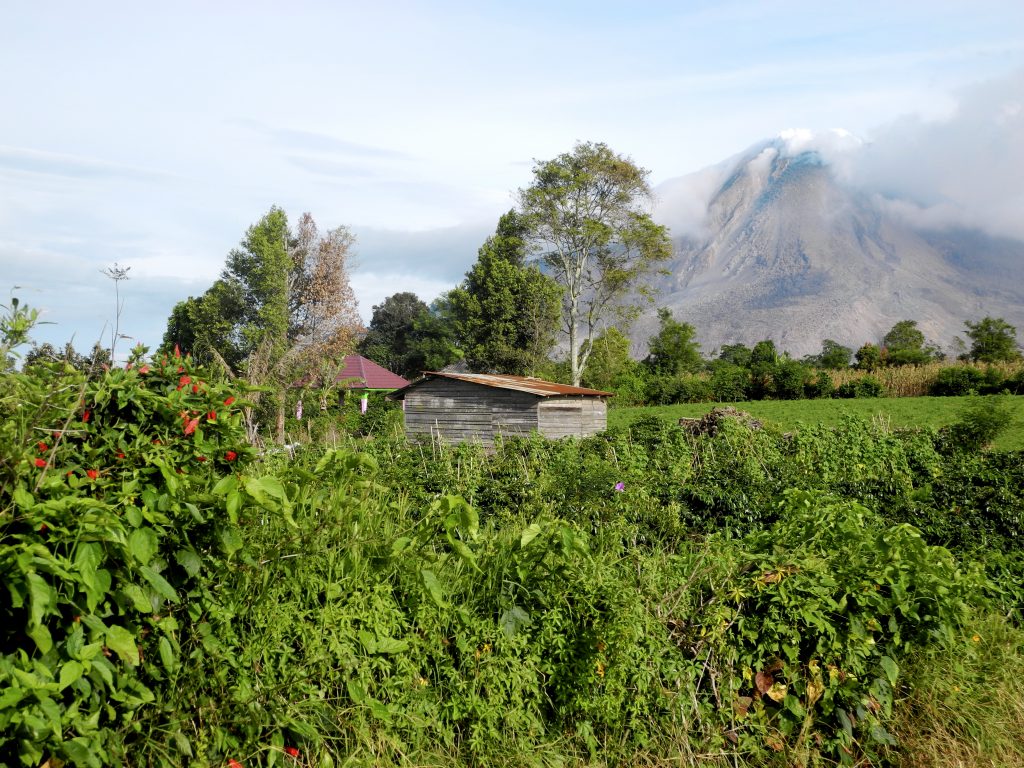A new moth species is discovered in Aceh
Text Alfred Fahringer
The discovery of a new moth species, the Endoclita fahringeri, in the mountains of Gunung Leuser in Sumatera, Indonesia is proving to be a landmark in scientific history, as narrated by Alfred Fahringer.
Into an ancient origin
It was the beginning of August in the dry season, and our journey began from Singapore to Medan. Together with my brother Richard and our friend Nick Hughes, we first passed the resort town of Berastagi and onto Kutacane before arriving at the starting point of our trek, located on the eastern foothills of Gunung Leuser. The Gunung Leuser mountain range is located in Aceh, the northernmost province in Sumatra. Its capital, Banda Aceh, was badly hit by the Indian Ocean tsunami of 2004.
Gunung Leuser is a truly prehistoric landscape, sitting on 220 million-year-old rocks and harbouring forests and creatures that for millennia have been untouched. It was my love and curiosity for moths and butterflies that led me on this two-week expedition, and perhaps the desire to spot an Ice Age relic, trapped in a pocket somewhere on these tropical mountains.
Our guide was a short man in his mid-forties called Happy Happy, whose real name was Usman. Together with five porters, we ascended up primary forests, summiting at Gunung Pucuk Angkasan, Camp Simpang Air, Camp Bipak 1 and finally through Sungai Alas, one of the largest rivers of Sumatra into the Bipak Ridge.

Throughout this time, my eyes were constantly on the lookout for butterflies. I spotted no more than three or four. They were species that I recognised – two Delias momea crossing the ladang, a Lexias at the entrance to the forest and an orange Mycalesis at the forest edge. One morning, a high alpine butterfly even chose to sunbathe on our tent. It was a Dodona robinsoni, an extremely rare and remnant species restricted to these mountains here in Sumatra.
For the coming days we passed damp weather, wet shoes and obstacle courses made up of thick vegetation. Everything my eyes could absorb reminded me of Jurassic Park, a terrain long gone from the face of the earth, except for this one. The ancient rocks of these mountains were once part of Gondwanaland, the southerly supercontinent that existed approximately 300 million years ago.
A Descendant of the Dinosaur Age
And it was here, on the sixth day, that I spotted “her”. It was the porter, Sulaiman who found the moth, sitting on the grassy ground at one side of our trail at Camp Bipak Batu. She was huge, perhaps 15cm across, and I instantly recognised her ancient features – exactly similar venations on her forewings and hindwings, a characteristic called Homoneura, a primitive feature of the Lepidoptera butterflies and moths.
A direct descendent of the early Homoneura moths, she has been passing on her peculiar and primitive features for perhaps the past 70 million years, as old as the dinosaurs before they went extinct. This butterfly was definitely my dinosaur, and she is the prize that made all the sweat and effort worthwhile!
Trembling with excitement, all I could determine on site was that she was most likely a Hepialidae species. Through my efforts to find her identity, I discovered Dr. John Grehan in the USA, a leading global scientist on Hepialidae moths. She turned out to be a specimen yet unknown to science, belonging to the genus Endoclita. In Sumatra, only four species have ever been recorded, and from those, all are specimens discovered more than a century ago. In fact, no new Sumatran species has been discovered in the last 60 years.
With this new discovery, I must go back to Gunung Leuser again, back to the land of the dinosaurs in northern Sumatra and to possibly find a male specimen to complete our knowledge of this new species. Her specialty will help to preserve these mountains and help her live on in her home on our extremely fragile planet, for hopefully the next 70 million years.
For more stories and photos, check out Asian Geographic Issue 118.